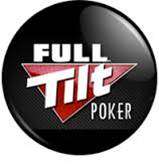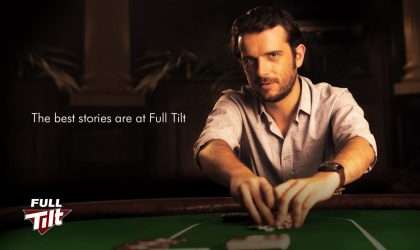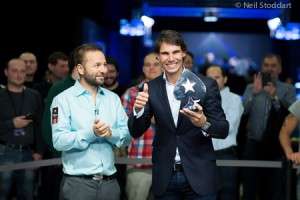Full Tilt Moves to a New Marketing Strategy, but is it Enough?
 Ever since Full Tilt was acquired by PokerStars’ parent company, The Rational Group, as part of the deal they brokered with the US Department of Justice in November 2012, it has failed to meet the expectations of the poker world in regards to its success.
Ever since Full Tilt was acquired by PokerStars’ parent company, The Rational Group, as part of the deal they brokered with the US Department of Justice in November 2012, it has failed to meet the expectations of the poker world in regards to its success.
Before Black Friday, Full Tilt was comfortably the second biggest poker site in the world, and while its image was badly damaged following the issues following Black Friday, it was far from mortally wounded. However, since its return under new ownership, Full Tilt has failed to even maintain a reasonable player base and has now slipped down to fifth in PokerScout’s rankings with only a seven-day player average of 1,500 cash game players. PokerStars, on the other hand, has a seven-day average of 18,500 cash game players, more than ten times the number of players on Full Tilt. The question to ask seems to be, how can these two sites, both of which have top notch software packages, and are owned by the same company have such different results. The answer has to be the differing marketing strategies, one that works, and one that seems to have missed the mark.
PokerStars and Full Tilt may be owned by the same company, but the crossover between the two seems to be fairly minimal. Each has their own marketing and press teams, and the policy seems to be to hold both as separate entities. This has led to majorly differing policies and strategies in how to operate and promote the sites.
PokerStars has continued with its tried and tested plan of using their TV and streaming presence to attract new players, and they also added non-poker personalities such as Rafa Nadal and Ronaldo to their sponsored player books. I’ve spent more than enough time discussing why I think these two are a great addition to the PokerStars team in other articles. Please click the link to have a look at my views, but the cliff notes are that they attract people from outside the current player pool to the game.
Full Tilt on the other hand, went back to using their tried and tested model of high stakes pros as the face of the site. They launched with Gus Hansen, Viktor “Isildur1” Blom and Tom “durrrr” Dwan as the three faces of Full Tilt. With these three megastars of poker, you would have thought they would be placed into marketing promotions that would highlight their skills and legends. What actually happened was they were used ineffectively in some subpar attempts to market the site. From the promotion where players could win free money after being picked out of a hat to play one of the professionals heads-up, or the promotion where the Full Tilt professionals played PokerStars Team Pro members in a heads-up competition, nothing has attracted the players back to Full Tilt.
To me, the promotions from Full Tilt have been “cookie cutter” promotions that have been run elsewhere in the past. I’ve not seen much that is innovative or creative in the way of marketing the site. The idea to let players win a contract was a good idea, but the application of that idea left a lot to be desired. The winning players were not required to do interviews, or even provide a picture of themselves for the site. Full Tilt gained effectively nothing from handing out a bunch of 6 month long sponsored player contracts to players that quickly returned to the internet shadows they came from.
Not that everything Full Tilt has done since its return has been poor. The return of the Black Card level of reward was pretty well received by all involved, and the change to the reward system to work as Rakeback for everyone leveled the playing field. No longer would the way someone registered for the site determine their profitability, which is a much fairer way to do business.
That leads me on to the new marketing strategy:
The new adverts are, as you would expect from Full Tilt, of the highest quality. They rival the most expensive adverts on TV today, and I can’t fault the premise or execution of the product. The new campaign is meant to focus on the players’ own stories rather than that of a professional. In the press release from Full Tilt, it was put as :
“Some of the most interesting stories are created or told at Full Tilt. Being able to share these stories and the intrinsic enjoyment of playing games such as poker, casino or slots is key to the new Full Tilt brand.
“Going forward, the Full Tilt product, marketing and branding will focus very much on sharing the experiences of players.”
So it seems that not only are The Professionals out, so is poker as the main focus of the site’s future, even though both of the new adverts exclusively use poker as the focus of the action. The move to using players as the focus could work well, but that really depends on how the campaign is handled. Random stories about Player X winning and losing are unlikely to attract many to play at the site, but if the story away from the table is engaging enough, it may just work. This could involve showing how the games at Full Tilt factor into a player’s life, how winning a poker tournament resulted in a new car, or how a great run at the blackjack tables saw a family go on their first holiday in years. A campaign like that needs something that potential customers can relate to. If you want Joe Public to be the focus of your marketing campaign, you need to make your Joe Public likeable, real, and engaging, or it’s just not going to work.
The other route that could work, while still focusing on new players playing a wide range of games, is find someone like Rafa Nadal to be Joe Public plus. By this, I mean a Rafa substitute coming to new games, learning them, and obviously enjoying themselves immensely. While the TV campaign may not be as strong, the social media and word of mouth impact would be massively improved.
By having a known personality from another field as the face of Full Tilt, the site would automatically gain some of the respect and approval that personality has with their fans. It’s an old marketing technique, using a famous person to endorse your product, but it’s still used because it still works. Just look at the next advert break during a mainstream TV show. How many of the adverts use otherwise famous people to promote or endorse the product? I’ll take a stab in the dark at around 50% of the ads fall into this category. So why is this obviously highly successful strategy not used more in this industry?
Cost is going to be a factor, but so is the sometimes toxic reputation of the gambling industry. In many circles, gamblers are universally thought of as degenerate, shady people, who are all addicted to games of chance. While that stereotype does exist, most people who play these games are just normal people who enjoy the excitement of taking small risks at the tables. This perception of the industry is still very common, and some celebrities rightfully think that being sponsored by a gambling brand would hurt their chances of picking up work as well as other sponsors. Still, as the signing of Rafa and Ronaldo shows, there are still those out there that want to take the step towards the tables.
If I was sitting in Full Tilt Towers, I’d be scouring the planet to find one of these people, because I really don’t see this new direction having a majorly positive impact on the profitability and volume of games on Full Tilt. I could be wrong, and only time will tell how this decision is going to pan out, but I don’t see this spin of the wheel changing Full Tilt’s fortunes.





















COMMENTS